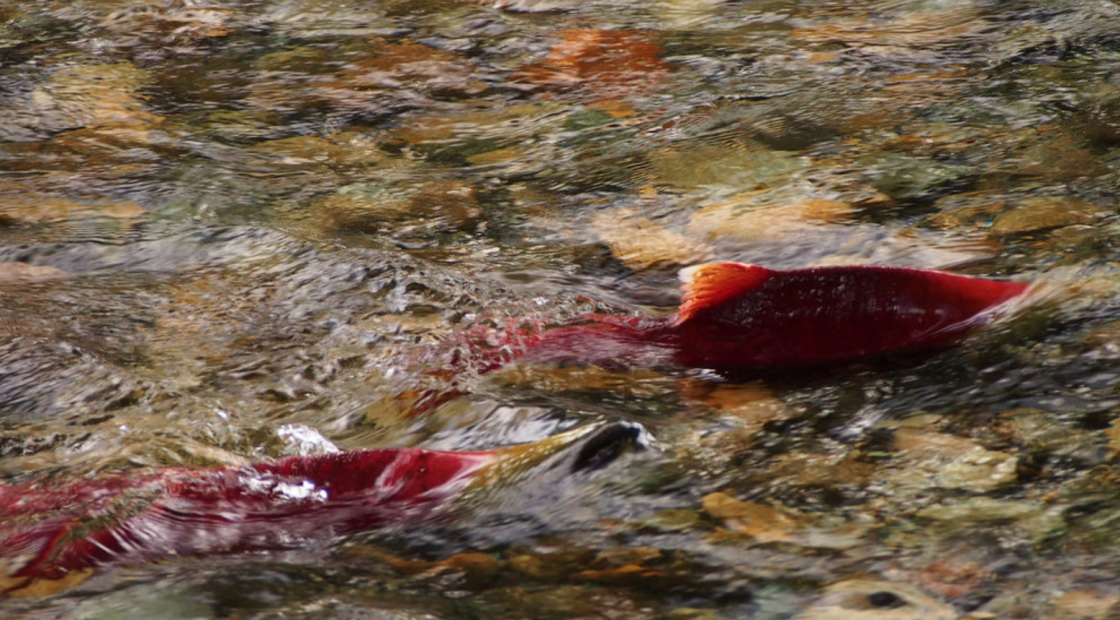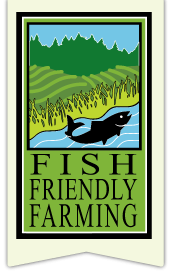About Salmon & Trout

In fall and winter, adult salmon and steelhead migrate into their home river and creek to spawn. Eggs are laid directly into the river or creekbed where they will need cold, high-quality water flows for 4 to 6 weeks to develop into small fish. These tiny fish, called "fry", emerge from the gravel into a pool where they will need shady, cool water (65° F or less) with large logs or root wads for shelter and a steady supply of aquatic insect larvae or floating adult insects. Juvenile Coho salmon and steelhead remain in freshwater for one to four years before migrating downstream to the ocean where they develop into large adults. Chinook salmon spend only a few months in the river or creek channel prior to migrating downstream to the estuary or ocean.
The fish's habitat requirements are met when farmers use the FFF program's Beneficial Management Practices (BMPs) for:
- soil and water conservation
- restoration and revegetation of riparian corridors along rivers and major creeks as well as small hillside creeks
- repair and careful management of roads to reduce sediment runoff
- limited chemical use
- removal/retrofit of migration barriers
- water diversions limited to high flow conditions only with storage for dry season use

